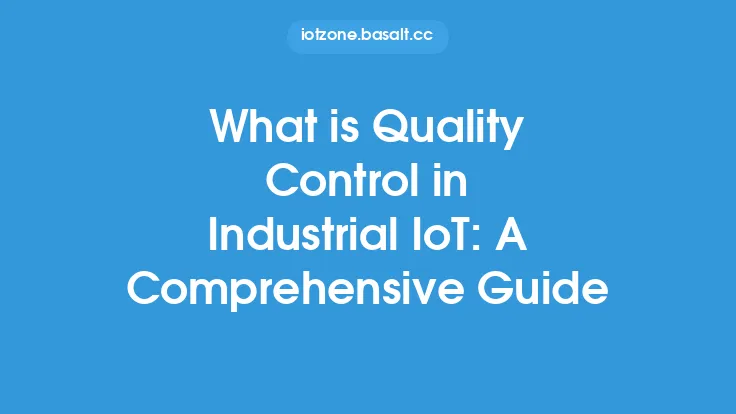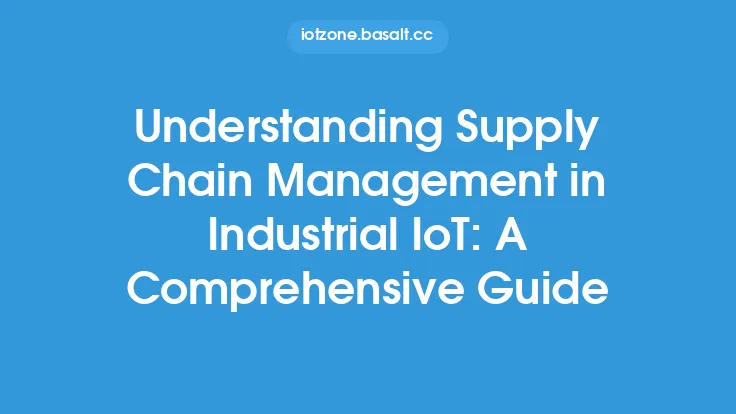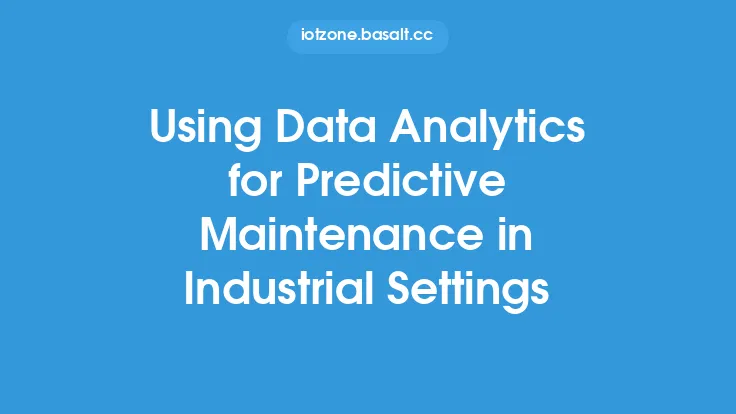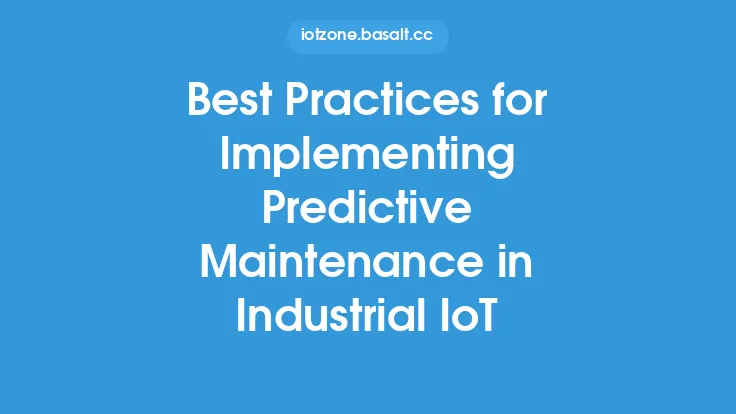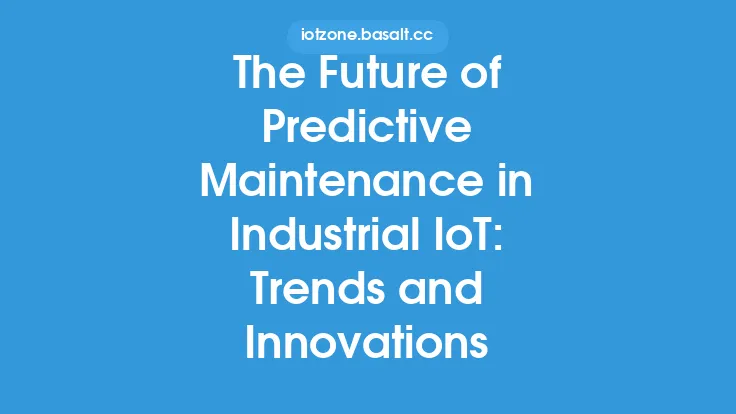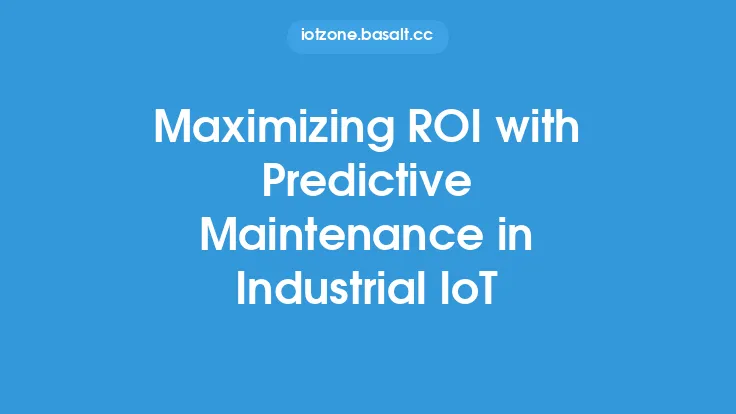Predictive maintenance is a crucial aspect of Industrial IoT (IIoT) that involves using advanced technologies to predict when equipment or machines are likely to fail or require maintenance. This approach enables industries to reduce downtime, increase efficiency, and lower maintenance costs. In this article, we will delve into the world of predictive maintenance in IIoT, exploring its fundamentals, key technologies, and implementation strategies.
Introduction to Predictive Maintenance
Predictive maintenance is a proactive approach to maintenance that uses data analytics, machine learning, and other advanced technologies to identify potential equipment failures or maintenance needs before they occur. This approach is different from traditional reactive maintenance, which involves fixing equipment after it has failed, and preventive maintenance, which involves performing routine maintenance tasks at fixed intervals. Predictive maintenance is a more efficient and effective approach, as it enables industries to address potential issues before they become major problems.
Key Technologies Used in Predictive Maintenance
Several key technologies are used in predictive maintenance, including:
- Sensors and IoT devices: These devices are used to collect data from equipment and machines, such as temperature, vibration, and pressure readings.
- Data analytics: Advanced data analytics techniques, such as machine learning and statistical analysis, are used to analyze the data collected from sensors and IoT devices.
- Cloud computing: Cloud computing platforms are used to store and process the large amounts of data collected from equipment and machines.
- Artificial intelligence (AI): AI algorithms are used to analyze data and make predictions about equipment failures or maintenance needs.
- Machine learning: Machine learning algorithms are used to analyze data and identify patterns that may indicate potential equipment failures or maintenance needs.
How Predictive Maintenance Works
Predictive maintenance involves several steps, including:
- Data collection: Sensors and IoT devices are used to collect data from equipment and machines.
- Data analysis: The collected data is analyzed using advanced data analytics techniques, such as machine learning and statistical analysis.
- Pattern recognition: The analyzed data is used to identify patterns that may indicate potential equipment failures or maintenance needs.
- Prediction: The identified patterns are used to make predictions about equipment failures or maintenance needs.
- Notification: The predictions are used to notify maintenance personnel of potential issues, enabling them to take proactive measures to prevent equipment failures.
Types of Predictive Maintenance
There are several types of predictive maintenance, including:
- Condition-based maintenance: This type of maintenance involves monitoring equipment conditions, such as temperature and vibration, to predict when maintenance is required.
- Predictive modeling: This type of maintenance involves using machine learning and statistical analysis to predict equipment failures or maintenance needs.
- Reliability-centered maintenance: This type of maintenance involves identifying and addressing the root causes of equipment failures to improve overall reliability.
Implementation Strategies
Implementing predictive maintenance requires a strategic approach, including:
- Assessing equipment and machines: Identifying the equipment and machines that are critical to operations and would benefit from predictive maintenance.
- Collecting and analyzing data: Collecting and analyzing data from equipment and machines to identify patterns and predict potential failures or maintenance needs.
- Developing a maintenance strategy: Developing a maintenance strategy that includes proactive measures to prevent equipment failures and address potential issues.
- Training personnel: Training maintenance personnel on the use of predictive maintenance technologies and strategies.
- Continuously monitoring and evaluating: Continuously monitoring and evaluating the effectiveness of predictive maintenance strategies and making adjustments as needed.
Challenges and Limitations
While predictive maintenance offers many benefits, there are also several challenges and limitations to consider, including:
- Data quality: The quality of the data collected from equipment and machines can affect the accuracy of predictions.
- Complexity: Predictive maintenance can be complex and require significant resources and expertise to implement.
- Cost: Implementing predictive maintenance can require significant upfront investment in technologies and personnel.
- Security: Predictive maintenance involves collecting and analyzing large amounts of data, which can create security risks if not properly managed.
Real-World Applications
Predictive maintenance has many real-world applications, including:
- Manufacturing: Predictive maintenance is used in manufacturing to predict equipment failures and reduce downtime.
- Oil and gas: Predictive maintenance is used in the oil and gas industry to predict equipment failures and reduce maintenance costs.
- Transportation: Predictive maintenance is used in the transportation industry to predict equipment failures and reduce downtime.
- Energy: Predictive maintenance is used in the energy industry to predict equipment failures and reduce maintenance costs.
Conclusion
Predictive maintenance is a powerful tool for industries to reduce downtime, increase efficiency, and lower maintenance costs. By using advanced technologies, such as data analytics, machine learning, and AI, industries can predict equipment failures or maintenance needs before they occur. While there are challenges and limitations to consider, the benefits of predictive maintenance make it a worthwhile investment for many industries. As the technology continues to evolve, we can expect to see even more innovative applications of predictive maintenance in the future.
